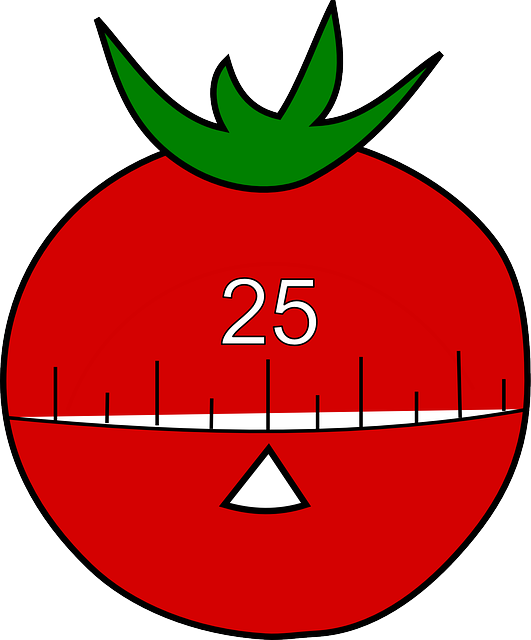In a world where distractions are just a click away, mastering the art of time management has never been more critical. Whether you're a student, busy parent, professional, or entrepreneur, managing your time efficiently can be the difference between success and burnout. One of the most popular and effective time management strategies is the Pomodoro Technique. Developed in the late 1980s by Francesco Cirillo, this simple yet powerful method has helped millions of people across the globe stay focused, productive, and in control of their time.
What is the Pomodoro Technique?
The Pomodoro Technique is a time management method that breaks work into intervals, traditionally 25 minutes in length, separated by short breaks. These intervals are called "Pomodoros," named after the tomato-shaped kitchen timer that Cirillo used as a university student. The technique's simplicity is its strength, making it accessible to anyone, regardless of their profession or workload.
How Does the Pomodoro Technique Work?
The Pomodoro Technique is straightforward and can be adapted to fit any task or project. Here’s a step-by-step guide on how to implement it:
Choose a Task: Start by selecting a task you want to work on. It can be anything from writing a report, studying for an exam, or even cleaning your workspace.
Set a Timer: Set a timer for 25 minutes. This is your Pomodoro. During this time, focus entirely on your task. Avoid all distractions, including emails, social media, or any interruptions.
Work on the Task: Dedicate the entire 25 minutes to the task at hand. If you think of something else that needs to be done, jot it down and continue with your current task.
Take a Short Break: Once the timer goes off, take a 5-minute break. Use this time to stretch, grab a drink, or simply relax.
Repeat the Process: After four Pomodoros, take a longer break of 15-30 minutes. This extended break allows you to recharge and return to your work with renewed energy.
Why the Pomodoro Technique Works
The Pomodoro Technique's effectiveness lies in its ability to create a sense of urgency and structure within your workday. Here’s why it works so well:
Focus and Flow: By dedicating yourself to 25-minute intervals, you create a focused work environment. This prevents multitasking, which can lead to decreased productivity and increased stress.
Time Awareness: The timer serves as a constant reminder of time passing, making you more aware of how you’re spending each minute. This heightened awareness can lead to better time management and prioritization of tasks.
Frequent Breaks: The short breaks between Pomodoros prevent burnout and help maintain a high level of concentration throughout the day. These breaks also give your brain the necessary downtime to process information and reduce mental fatigue.
Manageable Chunks: Breaking tasks into 25-minute segments makes even the most daunting projects seem manageable. This can reduce procrastination and make it easier to start tasks that you might otherwise avoid.
Improved Estimation Skills: As you use the Pomodoro Technique regularly, you'll begin to develop a better understanding of how long tasks actually take to complete. This can help you plan your day more effectively and set realistic goals.
Adapting the Pomodoro Technique to Your Needs
While the traditional Pomodoro is 25 minutes long, the technique is highly adaptable. Depending on the nature of your work or personal preferences, you might find that shorter or longer intervals work better for you. For example, if you’re working on creative tasks that require deep focus, a 50-minute Pomodoro followed by a 10-minute break might be more effective.
Similarly, the length of your breaks can be adjusted based on your energy levels and the complexity of your tasks. The key is to find a rhythm that works for you and stick to it consistently.
Overcoming Common Challenges
As with any time management technique, the Pomodoro Technique can present challenges. Here are some common obstacles and how to overcome them:
Interruptions: Life is full of interruptions, and staying focused for a full Pomodoro can be difficult. If you’re interrupted during a Pomodoro, assess whether the interruption can wait until your break. If not, pause the timer and address the issue before returning to your task.
Monotony: Working in strict intervals can sometimes feel monotonous, especially if your tasks are repetitive. To combat this, vary the tasks you work on during each Pomodoro or alternate between different types of work to keep things fresh.
Difficulty Starting: If you find it hard to start a Pomodoro, try a technique called the "two-minute rule." Tell yourself that you only need to work for two minutes. Once you get started, you’ll often find it easier to continue for the full 25 minutes.
Integrating the Pomodoro Technique into Your Daily Routine
To make the most of the Pomodoro Technique, consider integrating it into your daily routine:
Morning Planning: Start your day by identifying the tasks you want to accomplish and estimate how many Pomodoros each will take. This helps create a clear plan for the day and ensures that you’re working on the most important tasks.
Track Your Progress: Keep a record of how many Pomodoros you complete each day and how much work you get done. This can help you identify patterns in your productivity and make adjustments as needed.
Reflect and Adjust: At the end of the day, take a few minutes to reflect on what went well and what could be improved. Use this information to adjust your approach and refine your time management skills.
Conclusion
The Pomodoro Technique is a powerful tool for anyone looking to improve their time management and productivity. By breaking your work into manageable intervals and taking regular breaks, you can maintain focus, reduce stress, and accomplish more in less time. Whether you’re a student, professional, or entrepreneur, the Pomodoro Technique can help you take control of your time and achieve your goals. Give it a try and see how this simple method can transform your workday.




